8 Things To Know Before You Eat In Korea
Last Updated on December 20, 2024
The food is served and you are ready to dig in… but wait, do you know good table manners in Korea? I’ve made plenty of mistakes around the dinner table in Korea, chief among them tapping my father-in-law’s soju glass when he poured his own drink. I’ll get to that story later.
There is a lot to know about eating in Korea and I should add that a lot depends on who you’re eating with. I’ll get to that later too. Anyway, you’re ready to eat in Korea. Before you do, let’s learn the Korean eating etiquette so you can dig right in.

What to know about Korean table manners:
- Get Ready To Speak Some Korean
- Make Sure You Know Who Is The Oldest… and Youngest
- Know What To Do With The Utensils & Bowl
- It’s Not A Buffet
- Don’t Chit Chat or Make Noise While You’re Eating
- Know Who To Pour For & When
- Balanced Bites
- Speed Eating… Or Not
(This post contains affiliate links, which means I receive a certain percentage of a sale if you purchase after clicking at no cost to you. Thank you for your support.)

1 Get Ready To Speak Some Korean
There are a couple of sentences you should learn if you’ll be dining with Koreans. Here’s what you should learn to say before you eat in Korea:
잘 먹겠습니다 – jal meokget-seumnida: This means “I will eat well” and is a way to also say “thank you for the meal” to the host. This is like thanking a chef or someone who has cooked for you.
잘 먹었습니다 – jal meokosseumnida: It might look the same, but it’s not. This means “I ate well” and when you say it at the end of the meal, it means you’re satisfied.
Did you know that Koreans also ask if you’ve eaten instead of how are you? Learn more here.
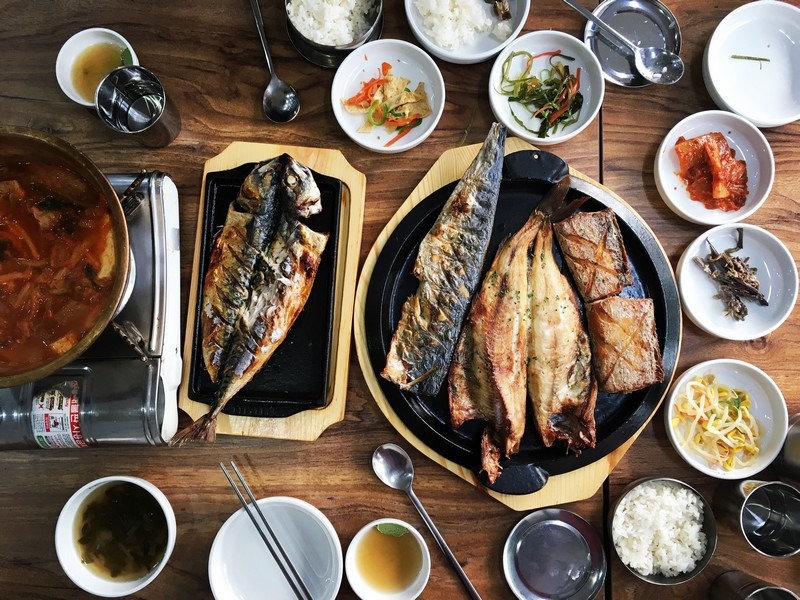
2 Make Sure You Know Who Is The Oldest… and Youngest
Technically, when it’s time to dive in, the oldest person gets first dibs. I say technically because numerous times in my experience, the oldest person tells me or the others at the table to go right ahead and dig in. So I guess, you should either wait until the oldest person takes their first bite, or wait until the oldest person tells you it’s fine to take a bite.
Maybe we should back up for just a moment. Who is supposed to cook at the table? This REALLY depends on who is at the table in my experience. You’ll hear that the older person should do the cooking but in my husband’s group of friends, that experience is relegated to the youngest guy at the table.
What you should really know is you will almost never be asked to do it if you’re at a table with Koreans. They’ll probably assume you don’t know what you’re doing and so whether you’re the oldest or youngest, you won’t even be asked. When in doubt, take a cue from those at the table.
When you’re out and about with a boisterous crew that’s looking to go for multiple rounds, which generally means you’re jumping from one restaurant to another, the best and really ONLY time you can leave is enroute to the next stop.
Keep this in mind. If the oldest person is still having a great ‘ole time, it’s really difficult to skedaddle, but if everyone is already up and walking, it’s a lot easier to sort of bow out, literally, start bowing and backing away.
Remember that age is a bit different in Korea. Make sure you know Conversations With Koreans: How many bowls of tteokguk have you eaten?!
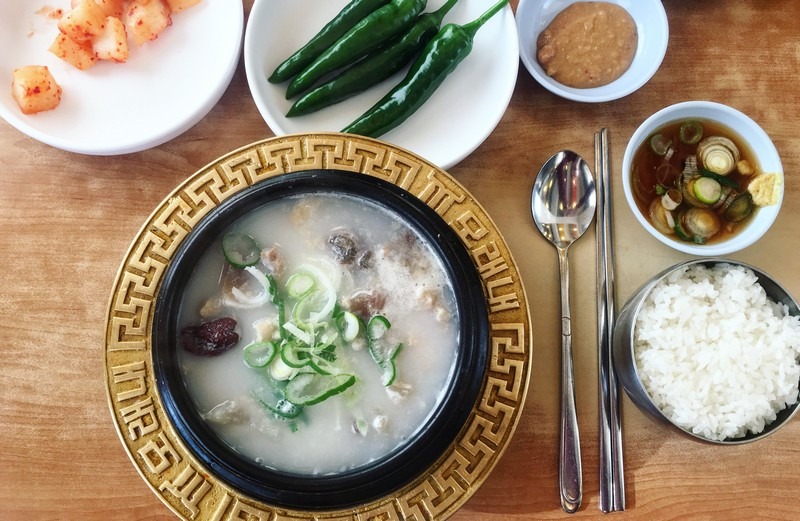
3 Know What To Do With The Utensils & Bowl
A few things to remember at the table. Don’t pick up the bowl of rice. Picking up the bowl and bringing it to your mouth is common in some other countries, but not in Korea. Use the spoon to scoop up the rice and then eat. Also, you should use the spoon to eat the soup.
In a nice setting, just eat as much as you can with the spoon only, but if you’re with buddies and the soup is good, feel free to pick up the bowl to finish that tasty broth at the end. According to my husband, everyone is much happier if the food is eaten and enjoyed. But again, not really appropriate for all situations and more traditional settings.
Don’t stick your chopsticks in your rice bowl so they’re sticking straight up. Make sure you know the Korean superstitions so you don’t create a faux pas. If you need to put them down, just place them over the top of the bowl or on a chopsticks stand if there is one though there isn’t often one at most restaurants unless they’re higher end.
Additionally, spoons are not to be used for side dishes, or banchan. Spoons are for rice and soups. Chopsticks are for side dishes and meat. Chopsticks should not be used as a skewer to stab food. Looks like it will work, and it will, but don’t do it.
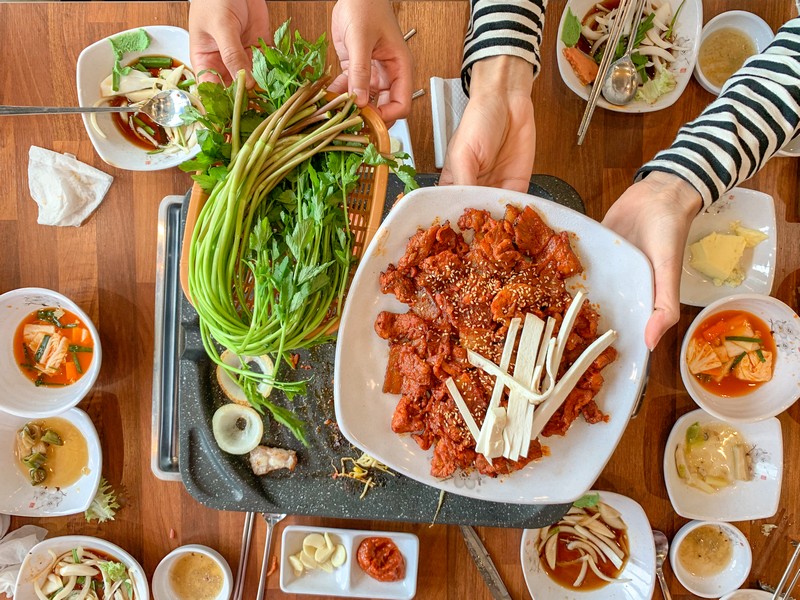
4 It’s Not A Buffet
The table has been set and there are a tremendous amount of delicious looking dishes spread across the table. Do NOT take a bunch at one go and fill your plate like it’s a buffet. Take just enough for a couple bites and mix it up with a bite of rice and side dishes and then some of the soup, and then go back to the rice and then grab some kimchi. Sharing is caring after all. Don’t hoard all of one dish on the table.
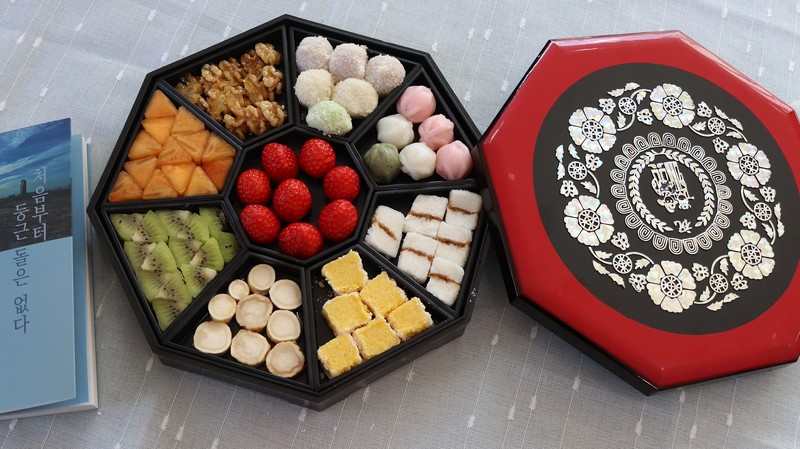
5 Don’t Chit Chat or Make Noise While You’re Eating
If you’ve ever attended a templestay program in Korea, then you were probably shown and told that you should make no noise while you’re eating. No talking. No clinking of utensils against bowls. No slapping your lips together or chewing noisily. Nothing. This goes for pretty traditional settings.
Again, take cues from those around you. My Korean family is fairly strict about this. Coming from a family who enjoys long dinners mostly filled with talk of the day and news, it’s always a difficult transition when we visit their house. Eat quietly and quickly and then you can chat after.
That said, read the room. My Korean family is like that, but most of the outings for dinners you’ll have will be with friends, maybe co-workers, and then it’s really a much different story. Enjoy the discussion.
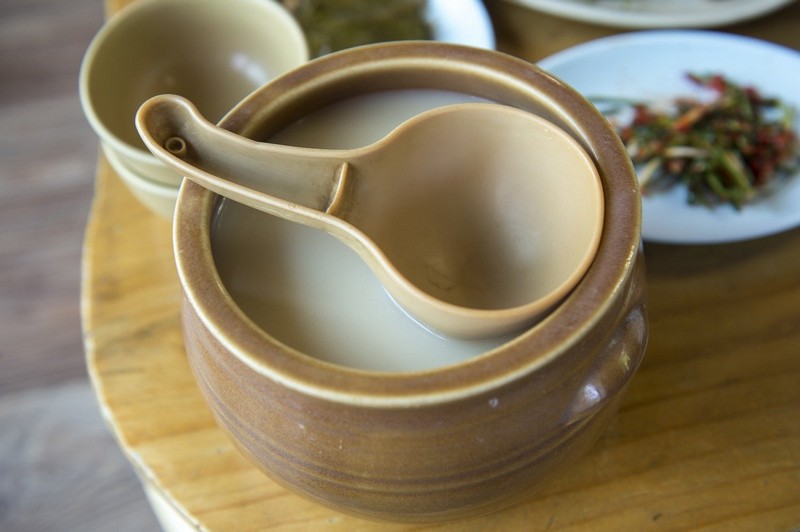
6 Know Who To Pour For & When
Know how much you want to drink because once your glass is empty, someone else at the table will be filling it up. If you don’t want to drink too much, take sips. If you’re ready for a party, one shot and have fun. And you should be on the lookout for empty glasses too as it’s your job to fill up others’ glasses near you. I say near you because you shouldn’t be leaning too far down the table to fill a glass. Keep it natural.
Now, when you pour or receive, you need to remember to use two hands. No, two hands don’t need to be holding the cup or the bottle. That’s reserved for when you’re showing very high esteem. Place one hand on the lower part of your arm while that hand holds the bottle to pour. OR, similarly, place one hand on the lower part of your arm while that hand holds the cup to receive the alcohol.
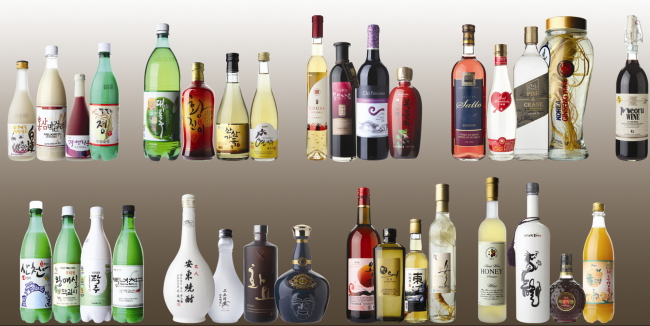
Did you know there are five rounds in a Korean night out? Read more about a night out in Korea and how to last all five rounds!
Now for a little story time as promised in the intro. While the standard drinking etiquette in Korea is as mentioned above, it’s not uncommon to find people pouring for themselves. You shouldn’t start the trend at your table, but if you notice an older Korean at your table doing it, then it’s fine.
I noticed way back that my husband’s group of friends would often pour their own glasses or shots of soju and when they did, to show respect but not have to go through the trouble of pouring with two hands and all, another person nearby would sort of just tap the glass with their finger.
I had seen it so much that I thought it must be a normal thing among Koreans. (Apparently my husband just has plenty of friends and they all do this.) Suffice to say, we sat down with my father-in-law enjoying some sool after jesa one holiday and he poured his own shot. I tapped the side of his glass and all hell broke loose.
No, no. It wasn’t that bad, but my FIL’s face was a mixture of confusion and shock and my husband sputtered trying to figure out how to say my wife just confused my friend group’s show of respect for you. In the end, we all laughed but , watch those Koreans around you. Do what they do. It’s as easy as that really.
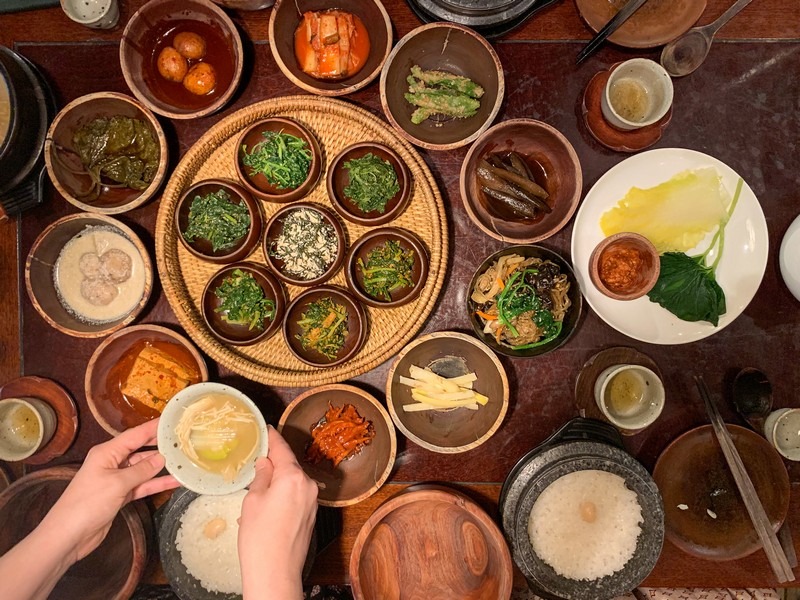
7 Balanced Bites
There is bound to be something a bit spicy, something a bit sweet, and plenty of in between. The best way to enjoy a Korean meal is to enjoy each and every dish and move around the table. Don’t be choosy with one side dish and rice. The meal won’t be very enjoyable in the end and also others at the table might think you’re a bit greedy and don’t want to share.
8 Speed Eating… Or Not
I’m a slow eater. Well, it’s because I enjoy talking during dinner, so I’m just taking bites between discussion. As mentioned though, you shouldn’t be all that chatty if you’re dining traditional style. Whether you’re talking or not, you’ll want to pace yourself with those around you.
If you’re slower, people will start to think you don’t like the food or they’ll feel awkward as they slow down too. Try to wrap up at the same time as those around you so everyone gets their comfortable fill.
You’re ready to sit down to eat in Korea now, I’m sure of it. From the basic Korean table manners, to etiquette in a temple, you’ve got a head start now. The biggest thing to note if you’re going out in Korea, watch those around you and follow the leader, aka the oldest person at the table.
Did you like this post? PIN IT!
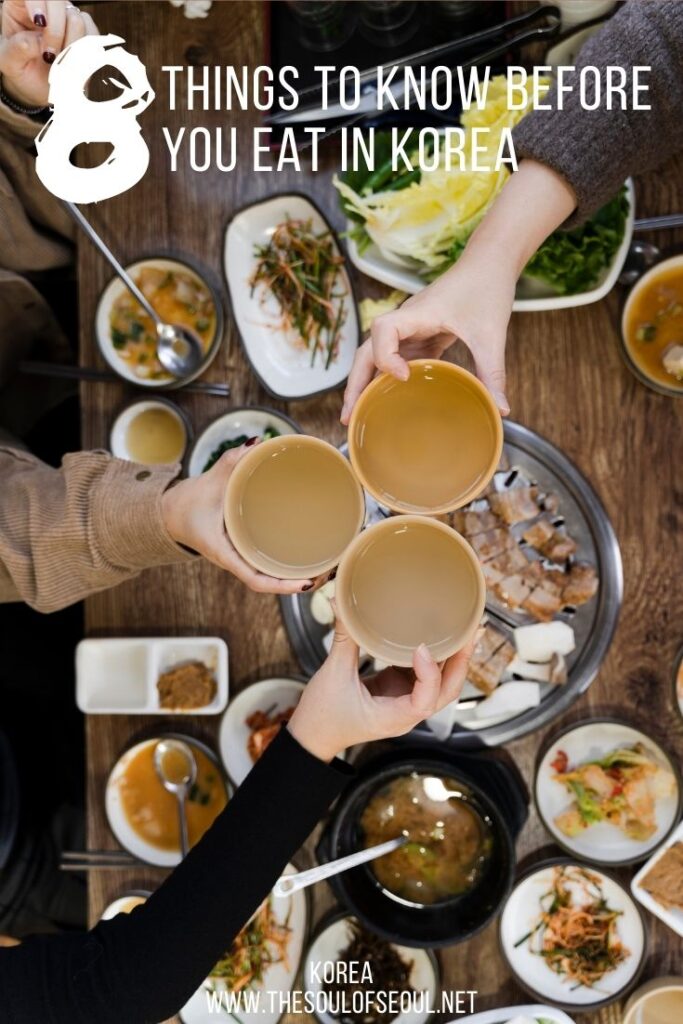
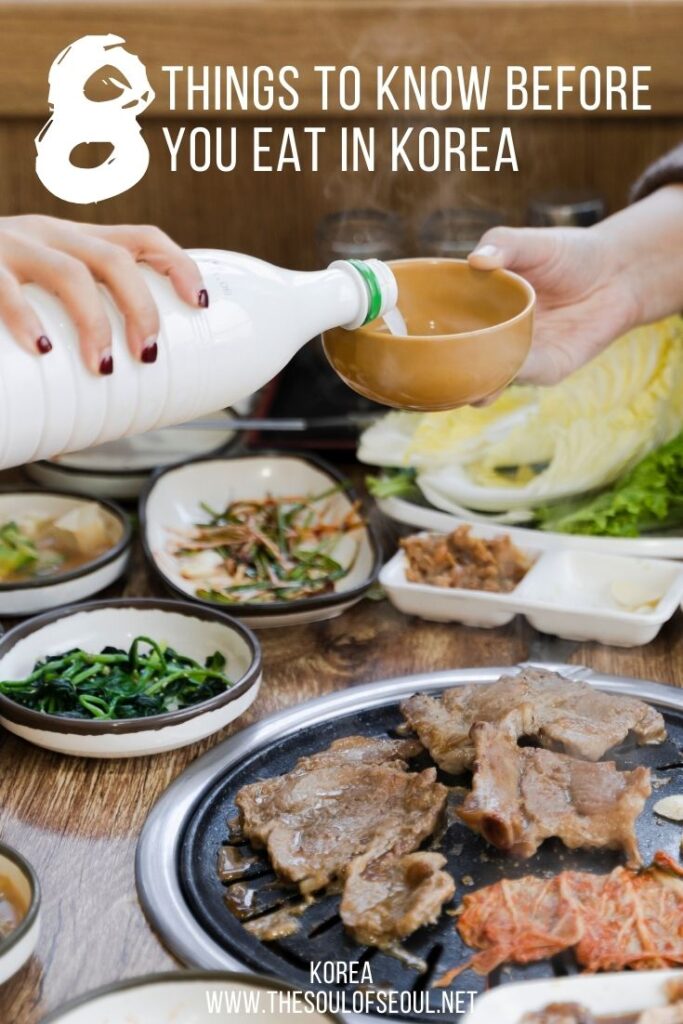


3 Comments
Cynthia Gurin
Thank you kindly for your reply, Hallie. I was particularly curious since your initial post seemed to suggest the opposite where table manners are concerned. We have lived in a number of countries but were not fortunate enough to have counted South Korea among them.
CG
In watching a newly discovered treasure trove of English subtitled K-dramas on Netflix (surprisingly fine quality writing, and truly excellent acting) I was struck by a number of things which prompted be to do some research. (1) Heavy drinking (hooboy!) (2) Respect for elders (nice) (3) Outrageously awful table manners (loudly slurping, chewing with mouths open, stuffing an inordinate amount of food in the mouth, etc.) Is the latter normal? Because while your description suggests it is not, in literally dozens of multi-episode K-dramas, poor table manners and being fall down drunk, including young women, appears to be the norm.
Hallie Bradley
What are table manners in one place may not be in another. It sounds like you assume table manners are the same everywhere… Saying that have outrageously bad table manners is looking at it from your non-Korean perspective. In Korea, and a few other countries that I know of, slurping isn’t rude at all and when eating noodles or soups actually means that one is enjoying their food. If you eat a noodle soup exceedingly quiet, the host/cook will assume you’re NOT enjoying your meal. People do chew with their mouths open… it’s not really considered to be bad manners and some things are supposed to be eaten big and people that can stuff the entire thing into their mouth are bringing good luck upon themselves.